Advertisement
Leland Melvin's Journey From The NFL To NASA
Resume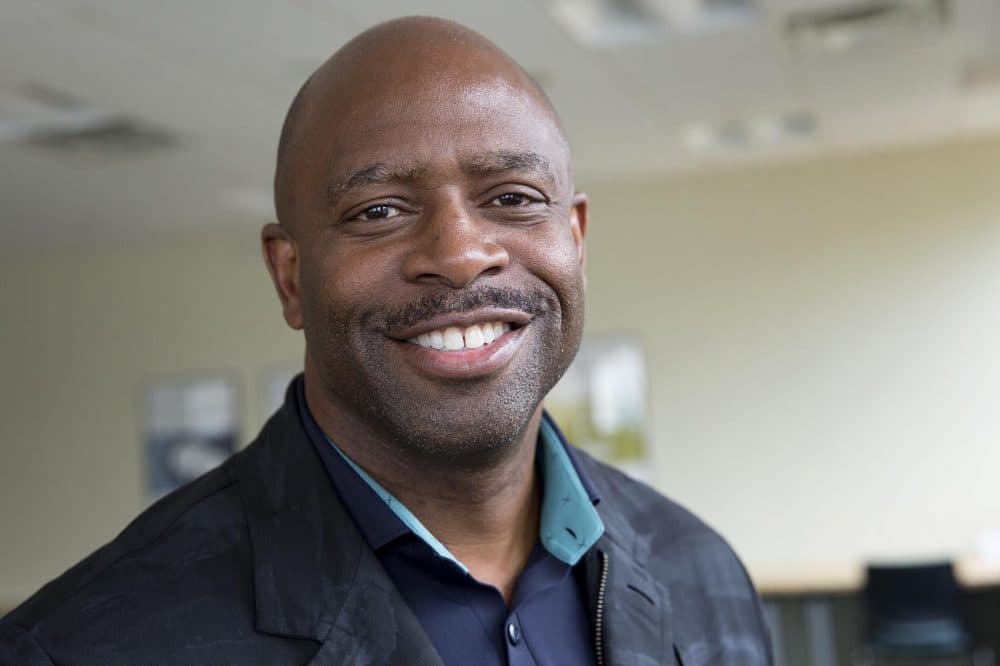
Leland Melvin was 5 years old when the Apollo 11 spaceflight landed Neil Armstrong and Buzz Aldrin on the moon and into history. He remembers adjusting the antenna on a Sylvania black-and-white television, so that his family could witness the historic moment.
"The next day, all my friends were saying, 'Hey, do you want to be an astronaut?' " Leland recalls. " 'We have Neil and Buzz walking on the moon — one small step for man, one giant leap for mankind.' And I said, 'No. I don’t want to be an astronaut.' Because I saw these guys in crew cuts, and they were military, and I didn’t think that I would want to do something like that. I didn’t see someone who looked like me, either.
"I didn’t see someone who looked like me."
Leland Melvin
"I grew up in a small southern town, in Lynchburg, Virginia. And most of the people that I knew were — you know, African Americans — were school teachers, because that was kind of the highest position that you could get. I didn’t know of any bankers or lawyers or people like that. It’s one of those things where you kind of know your place.
"You know, you would watch the television. You would see buses are getting firebombed, and you’d see these things happening to people that look like you. So you know that you can’t just do everything that anyone else can do. You have to make sure that you’re treading — I’m not going to say lightly, but treading in a way that’s not going to disrupt the apple cart and will take not only you out, but maybe take you and your family out, or your community out."
Finding His Passion
Growing up, Leland loved playing with Tinkertoys and blocks — he liked building things. And when he was 8 years old, he got his hands on a new source of fun.
"My mother had the, I guess, wherewithal or misfortune in buying me an age-inappropriate, non-OSHA-certified chemistry set," Leland says. "She said, 'Follow the instructions.' And I threw the instructions over my shoulder and I proceeded to mix these two dissimilar chemicals together that created the most incredible explosion in her living room.
"And I just remember it getting on the rug, and the rug burning. And I was like, 'Wow, look at this! Smoke, fire and brimstone right here from these two little beakers.' And I was, like, blown away — I was actually blown back. And there was smoke. But if you looked at my eyes, my brain was activated.
"You could see my eyes were as wide open as possible. And my parents didn’t make much money, so this is like, 'You don’t do that. You don’t mess up the sofa and you don’t mess up the rug.' But it didn’t matter to me. Because I knew all I needed was a lab coat and goggles, and I could be a chemistry major or a scientist."
Leland’s interest in science and engineering skyrocketed. In high school, he attended a special engineering program at the University of Virginia that specifically targeted minority students. He collected old bicycle parts and used them to build his own personalized bike. He helped his father refurbish an old bread truck into a family camper, complete with a stove and flip-down bunk beds.
'I Felt About The Size Of A Gnat'
Leland had always been an athlete. He started playing football at age 7 and grew up idolizing another Virginian, tennis legend Arthur Ashe. But he thought science would shape his future — until one big play during the homecoming game in his senior year of high school.
"I was running down the sideline," Leland remembers. "Stan Hull threw this perfect spiral into the corner of the end zone — I can see this whole thing playing out. The ball is coming into my hands. I looked into the stands a little bit, heard the crowd screaming, knew that I was going to be winning this game by catching this ball. And I dropped it. In the end zone. I felt about the size of a gnat.
"And I walked to the sideline. My coach, Jimmy Green, grabbed my face mask, looked me in the eyes and said, ‘Leland, I believe in you. Get back out there and catch the ball this time. Run the same play, catch the ball.’ And I was so embarrassed, because my friends and family were there. And I just wanted to sit down and go away.
"But, running down the sideline a second time, I could read 'Spalding' on the ball as it came into my hands. And we won the game. Unbeknownst to me, there was a scout by the name of Morgan Hout from the University of Richmond, who was watching the first mishap in the end zone. He started walking out of the stadium, he heard the crowd screaming the second time, and he came back and saw me doing a little dance in the end zone. And he said to himself, 'This guy, he failed horrifically. But he didn’t give up. And that one catch resulted in a $180,000 scholarship to the University of Richmond."
Football By Day, Larry Lab By Night
In Leland’s first season for the Spiders, Richmond went winless . But Leland developed into a standout wide receiver, establishing school records for career receptions and receiving yards. He became a two-time Honorable Mention All-American.
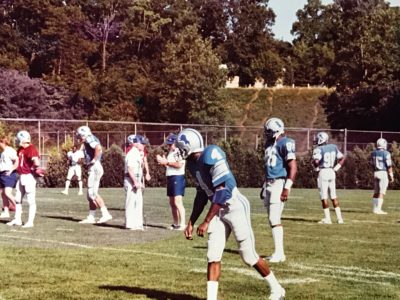
The Detroit Lions selected him in the 11th round of the 1986 NFL Draft, but then cut him after he was slowed by a hamstring injury during training camp. Leland started pursuing a graduate degree in material science engineering at the University of Virginia. But before the 1987 NFL season, he got an invitation to Dallas Cowboys training camp. Leland didn’t put his studies on hold.
"Before online learning became a thing, they were videotaping VHS video tapes of math for material science and electrochemistry that they sent to Valley Ranch for me to watch after catching footballs during the day for America’s team," Leland says. "That was the hardest job I've ever had, to train to be a professional football player and go to grad school at the same time — grad school as in material science engineering. And in the evenings, a lot of my colleagues were like, 'Hey, let’s go out to a club,' or, 'Let’s go do this.' And I'm like, 'No, I have to watch material science engineering videotapes.’ So I was 'Larry Lab' or 'The Nerd' — they called me 'The Nerd Guy.' "
During a routine passing drill with Dallas quarterback Danny White, things suddenly changed for Larry Lab.
"We were planning to throw a half-speed, 10-yard out, and he did an audible when he saw Tom Landry walking onto the field," Leland says.
Tom Landry was a future Hall of Fame coach, and White saw an opportunity to impress the football icon. He told Leland to run as far and as fast as he could.
"So I went for it. Pulled my hamstring," Leland recalls. "But I thank Danny White for helping me get to space. Because if it hadn’t been for that, possibly, who knows where I would have been?"
'I Felt This River Of Blood'
Leland’s NFL career was over. He went back to grad school full time, finished his masters degree in material science engineering and, as Leland jokes, did what many former NFL players do: he went to work for NASA.
He started in 1989 as an engineer at Langley Research Center, making optical fiber sensors. By 1998, he began astronaut training at Johnson Space Center. He appeared to be on the fast-track to space. But then ...
"[In] April, 2001, I was training to do something called a space walk, which is really more like a space crawl, because you’re pulling yourself around with your hands," Leland says. "And you're not walking. You’re floating, doing things like assembling the International Space Station. And my training of this — to train to simulate this on the ground — is in a 5 million-gallon pool that’s called the Neutral Buoyancy Laboratory.
"And I was in this suit that’s a cross between the Michelin Man and the Pillsbury Doughboy, going down 32 feet in the water. And we were actually going to be training on submerged space stations and space shuttles to simulate what we would do on our missions."
As he descended into the pool, Leland had trouble hearing his instructor. Soon he was hearing nothing but static. When he was pulled from the pool and his helmet was removed, it quickly became clear that something was wrong.
"The flight surgeon started walking towards me, and he was just moving his lips. And I thought he was just playing with me," Leland says. "And I said, 'This is serious. Why is he playing with me?' But, when he touched my ear and pulled his finger back, I felt this river of blood rolling down the side of my face. I was completely deaf.
"After emergency surgery in the hospital, the world-renowned ear, nose and throat doctors said that they don’t know what happened to me, and that I would never fly in space."
Unbeknownst to Leland, his suit had been missing its Valsalva pad, a small Styrofoam insert that helps astronauts equalize the extreme pressure that can build up in their ears.
About three weeks after the accident, Leland’s hearing returned to his right ear. But damage to his left ear remained. His dream of orbiting planet earth appeared to be over.
'I Knew That All My Friends Were Gone'
Leland shifted his focus at NASA. He worked on robotics and joined an educators program in which he traveled across the country encouraging children to nominate their teachers to become astronauts.
"And I’m working in this job, and we’re going around the country, getting kids to nominate their teachers to become astronauts," Leland recalls. "And one of the kids says, 'Hey, have you flown in space yet?' I said, 'No.' And he says, 'Well, you’re not an astronaut. Astronauts fly in space.' I’m like, 'Kid, shut up.' I’m just getting — not angry — but now I’m thinking 'Will I ever fly in space?' "
Leland was still working with kids and teachers on Feb. 1, 2003, the day the space shuttle Columbia was scheduled to return from its 28th mission in space.
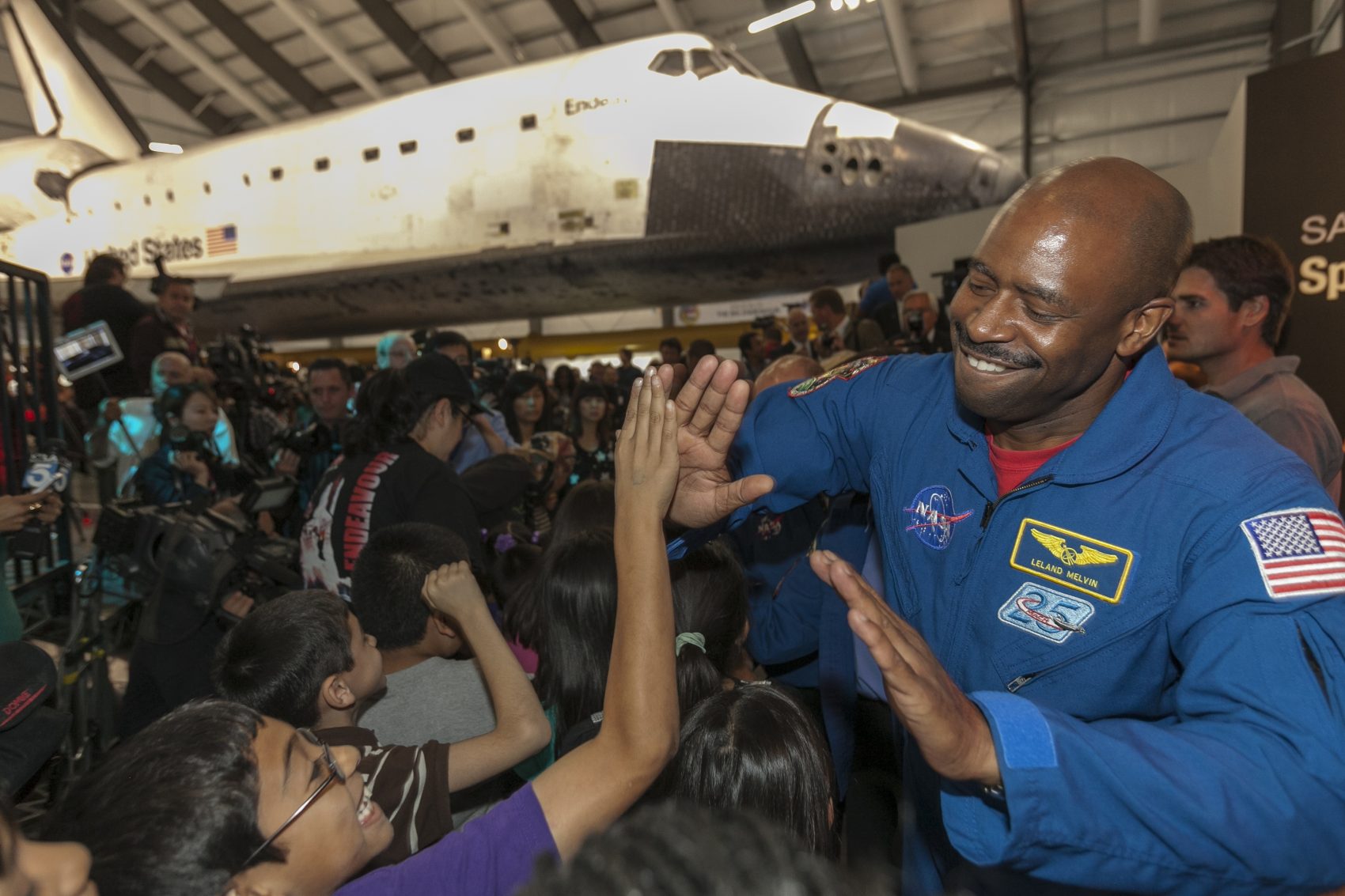
"When you’re landing, there’s a countdown clock to where the wheels should touch down on the runway in Florida," Leland says. "Well, I get a phone call from my education boss. And she’s new to NASA. She says, 'Leland, what does it mean when the countdown clock is now counting up?' And I said, 'How much is it counting up?' And she said, '20 seconds, 30 seconds, 40 seconds, a minute.' I did an illegal U-turn on Highway 66 outside of [Washington,] D.C. And turned back to NASA, because I knew that all of my friends were gone."
The shuttle broke up over the Texas sky as it was coming in and never made it to Florida. All seven Columbia crew members died, including David M. Brown, one of Leland’s close friends.
"And that night I went to David Brown's parents’ home in Washington, Virginia, to console them," Leland says. "And when I got there, David’s father said something so powerful to me. He said, 'We must honor the legacy of my son and the crew, who gave their lives for our civilization, for humanity, for doing these incredible, incredible feats.' And I’m trying to figure out how I’m going to honor them if I’m medically disqualified to fly.
"And we went to the different memorial services around the country. As we were taking off and landing in the NASA airplane, the chief of all the flight surgeons was sitting beside me on every takeoff and landing. And he watched me clear my ears on descent."
At the time, Leland was getting ready to move from Washington to Houston to continue his life as a non-flying astronaut. But as Rich Williams, the chief flight surgeon, watched Leland clear his ears to combat the cabin pressure on these flights, he saw an opportunity to resuscitate the earthbound astronaut’s dreams of space flight.
"Rich Williams said, 'Come to my office,' " Leland recalls. "And he gave me this waiver to fly in space, even though my hearing had not changed significantly. He felt if I could effectively clear my ears, then there'd be no reason why I shouldn't be able to fly in space. He believed in me. I got this get-out-of-jail-free card. I head back to Houston. And, soon after that, I get assigned to a mission."
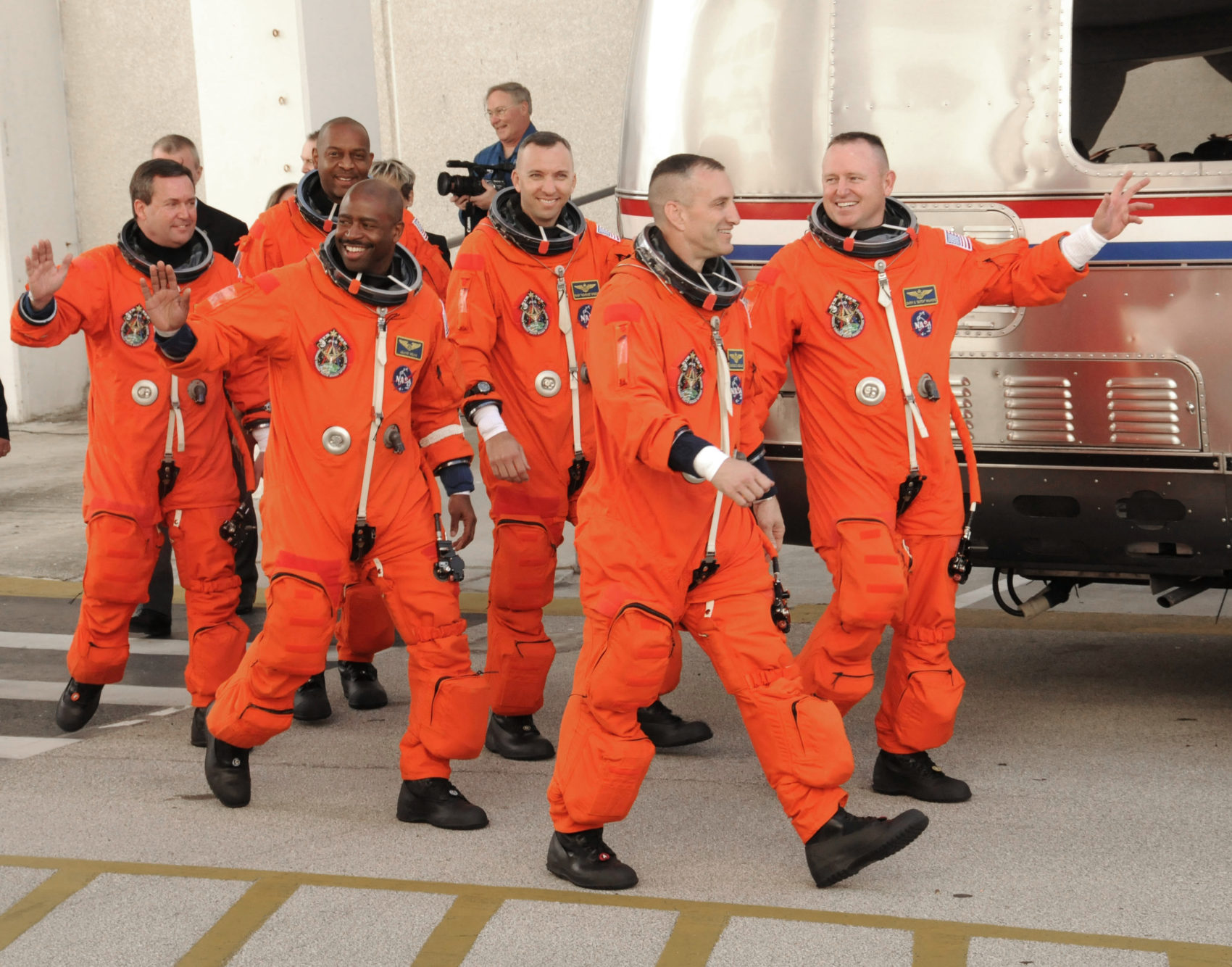
Leland went on to participate in two missions to the International Space Station. His Detroit Lions jersey, which he brought with him into space, is now exhibited at the Pro Football Hall of Fame in Canton, Ohio. He’s been an NFL player and an astronaut. But more than anything, Leland has become an advocate for what is possible.
"I’ll never forget, when I first became an astronaut, I was on a firetruck driving down the boulevards in Houston celebrating John Glenn’s return to flight on the space shuttle. I was a brand-spanking-new astronaut in 1998, driving down the road, and these two little black boys are standing with their father in their orange space suits. And their father points up to the firetruck, basically saying, 'Look at that guy.'
"And when we make eye contact, it was almost as though these kids had this rocket fuel going through their veins, and they were about to launch off that street. Because they saw me, and they saw the possibilities of them doing what they wanted to do, as being astronauts.
"So that was my first eye-opening moment that said, 'OK, this does matter. And that what you’re doing, people are watching.' "
Leland Melvin is the author of "Chasing Space: An Astronaut's Story of Grit, Grace, and Second Chances." For much more on Leland's life, check out his personal website.
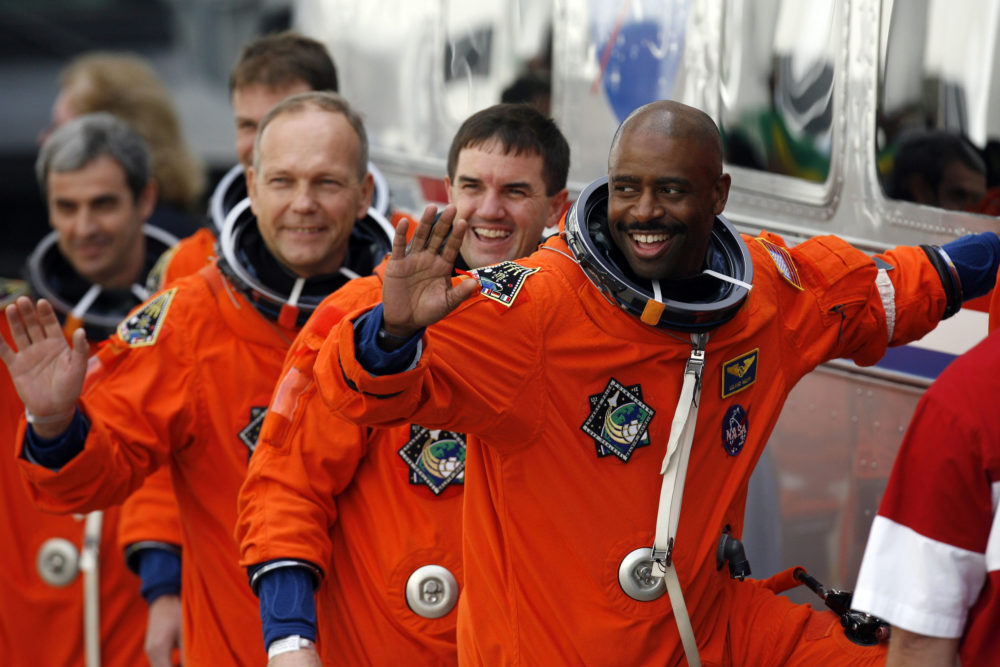
This segment aired on August 31, 2019.
